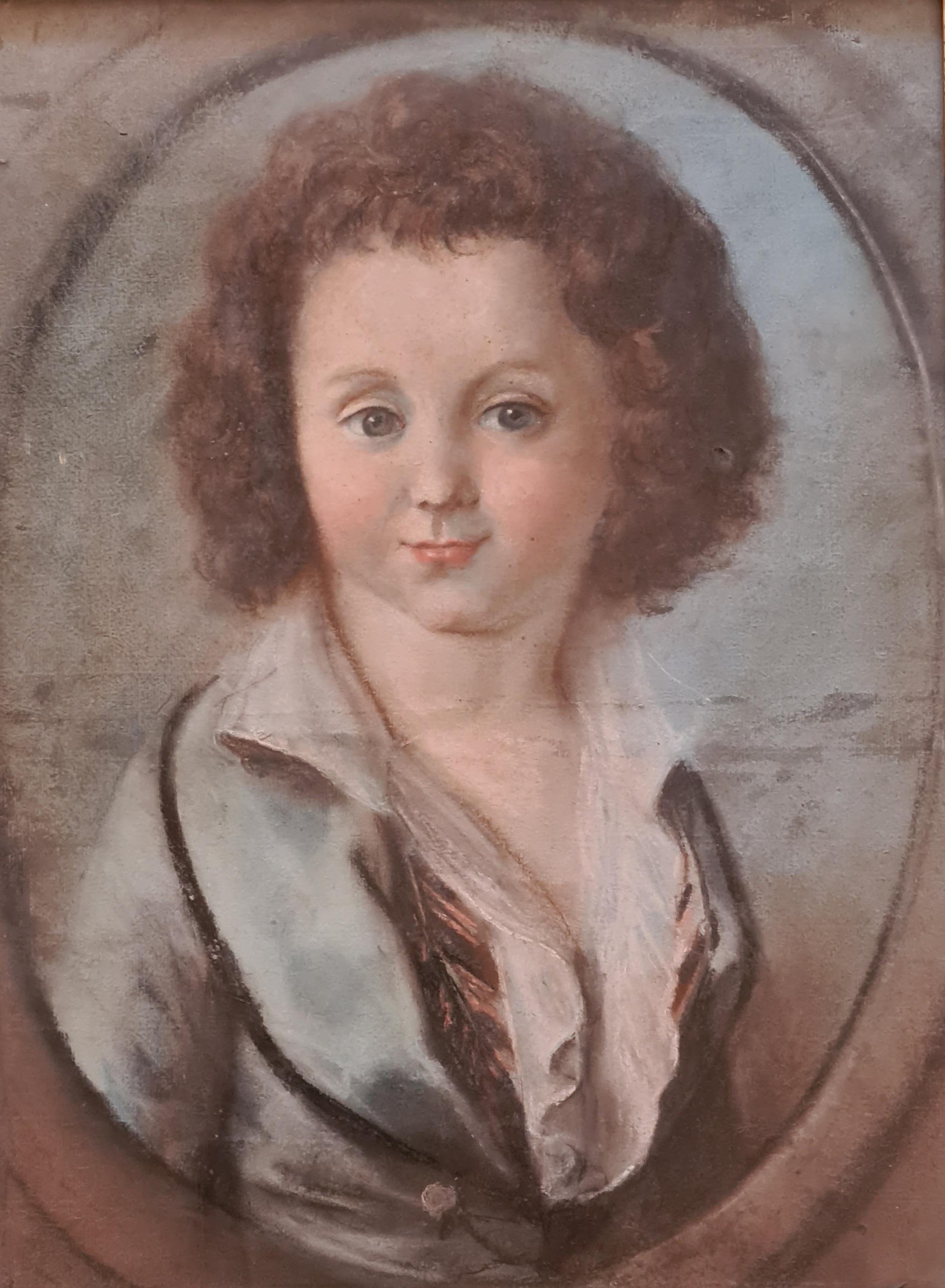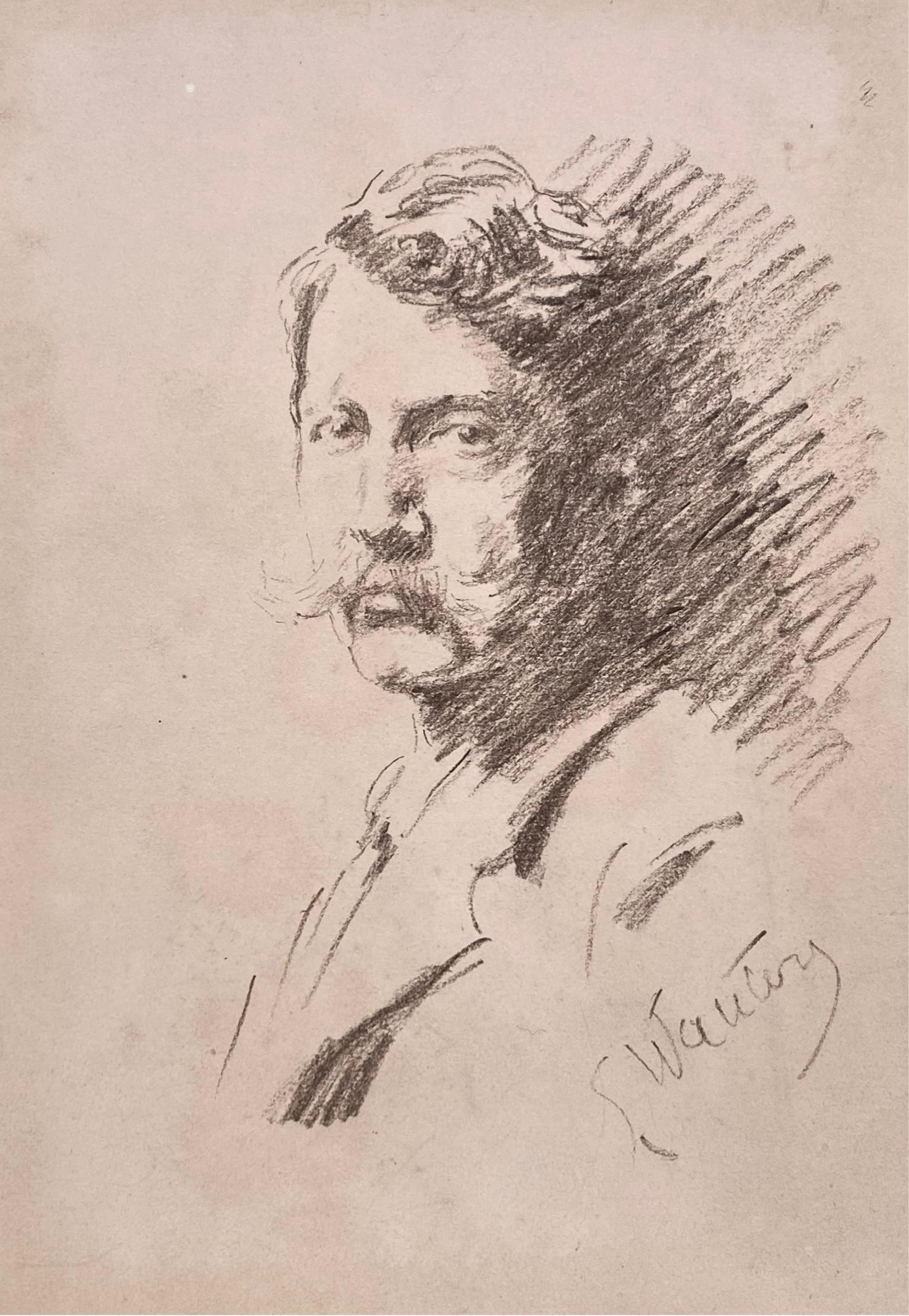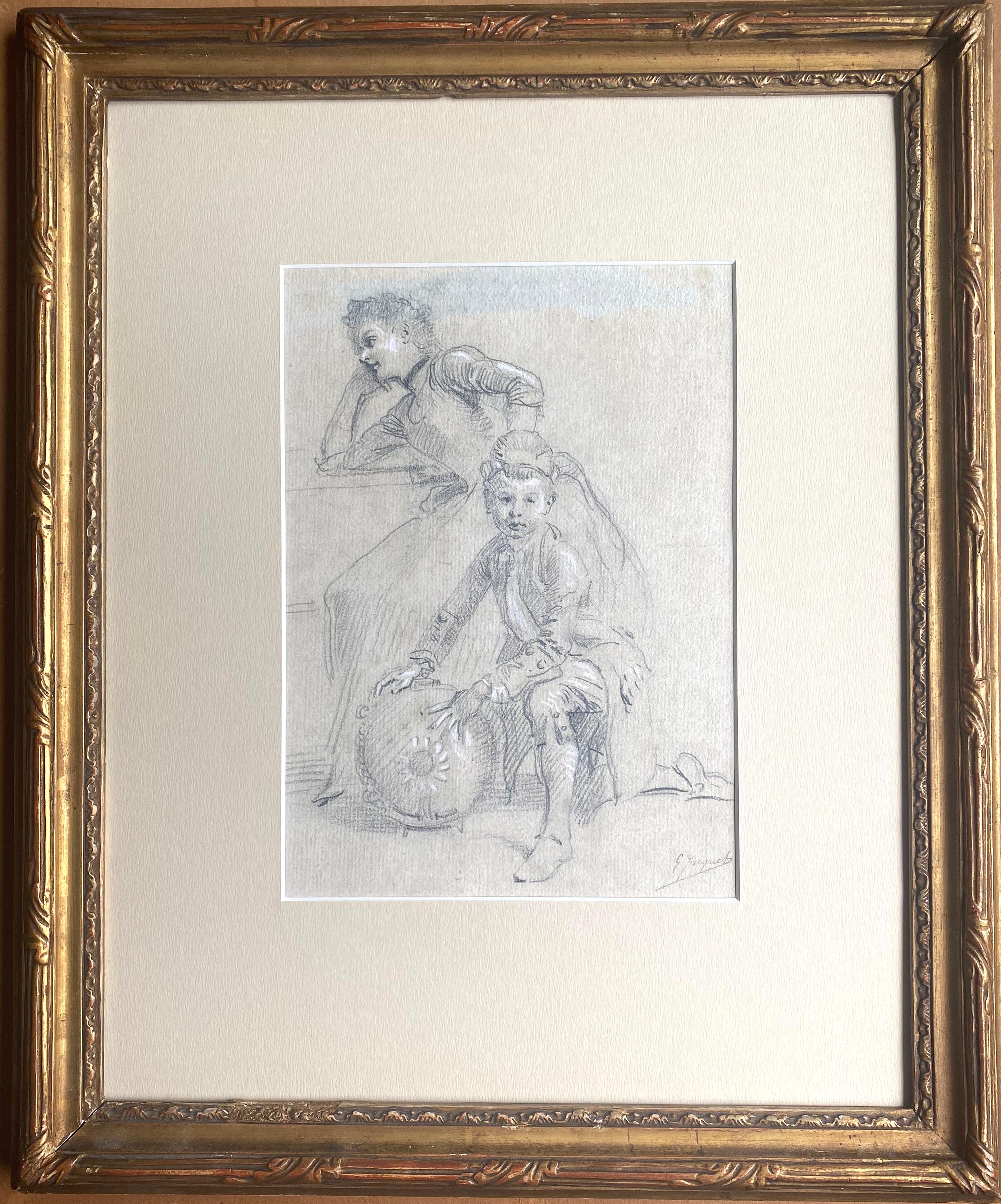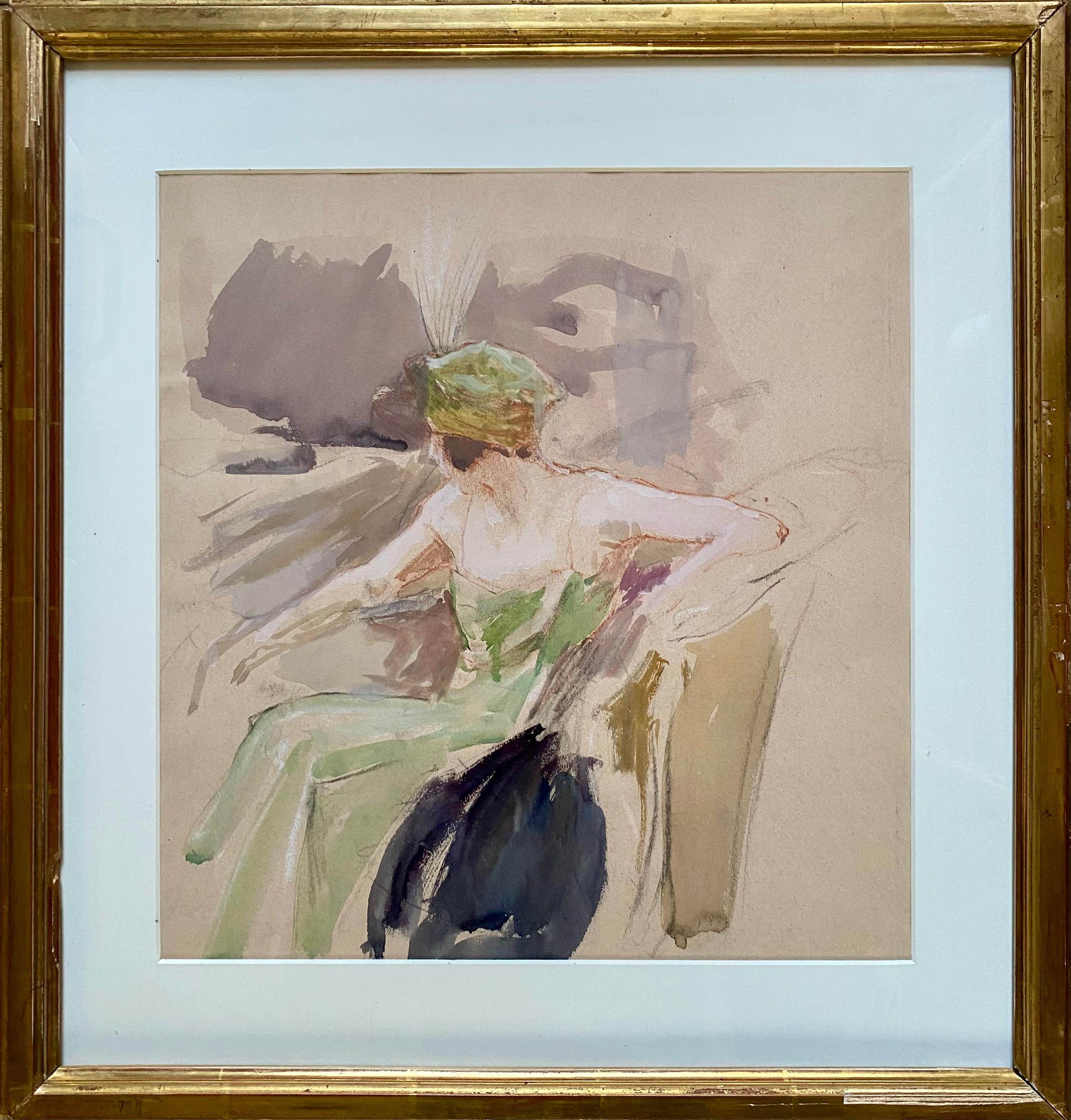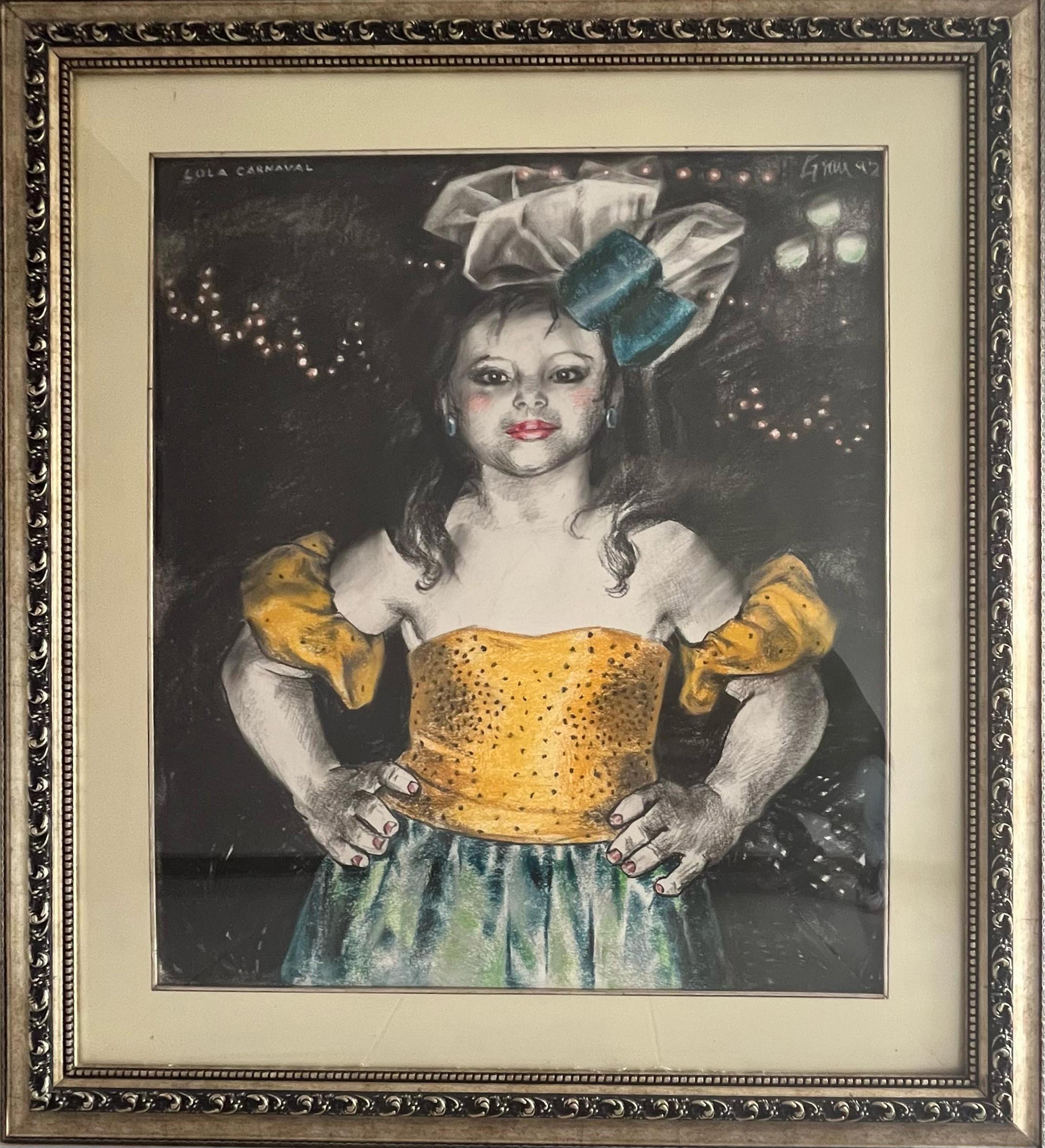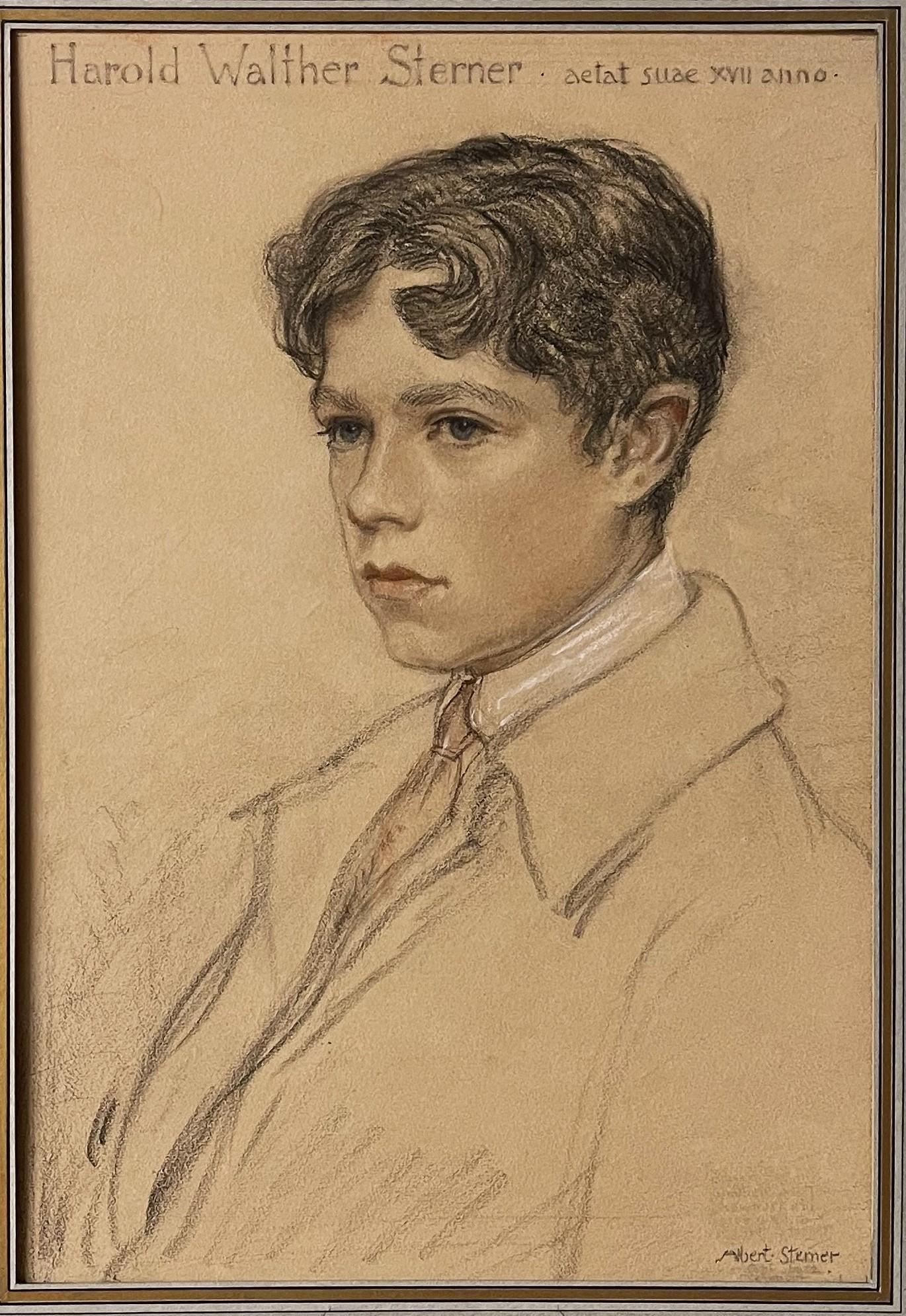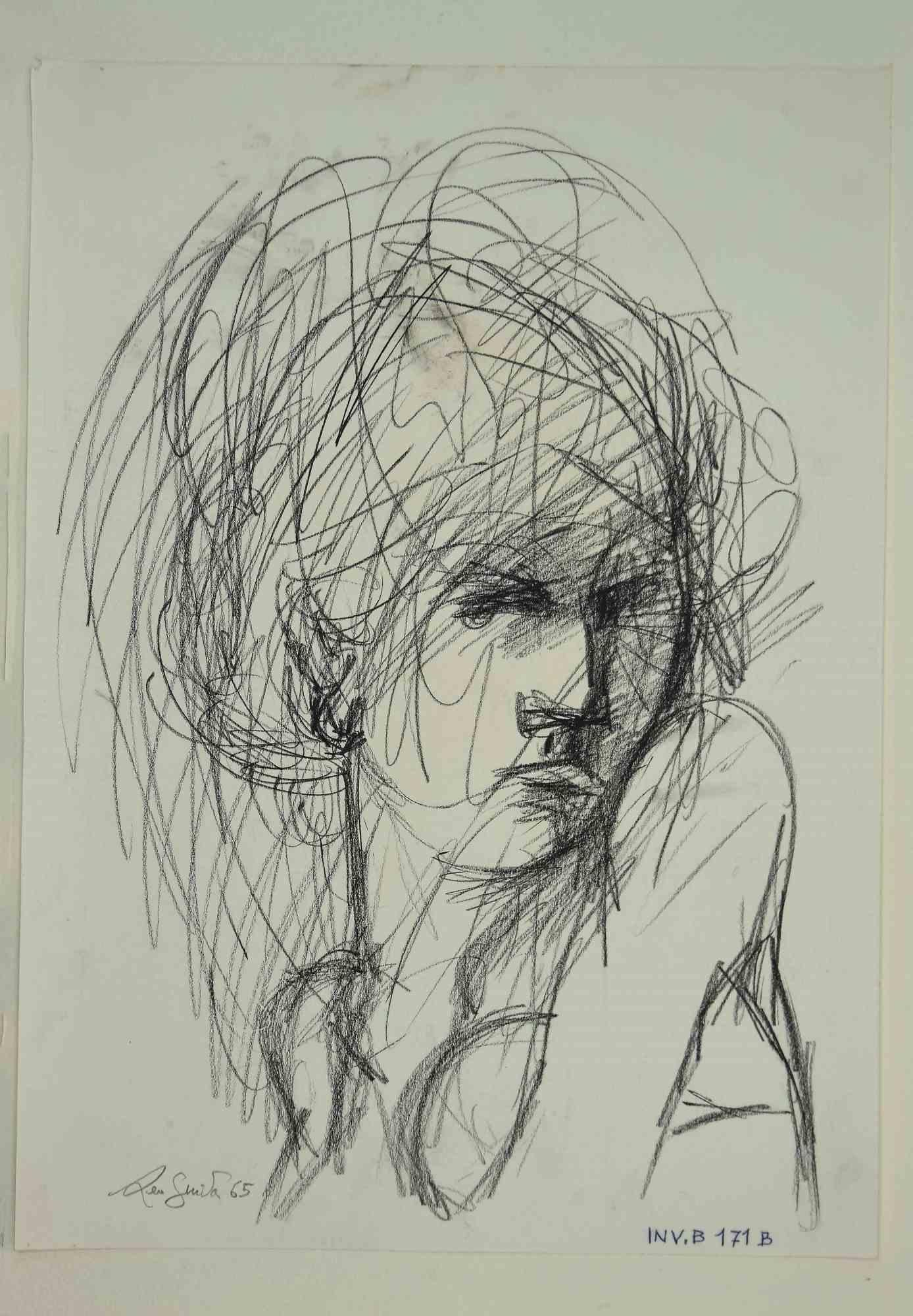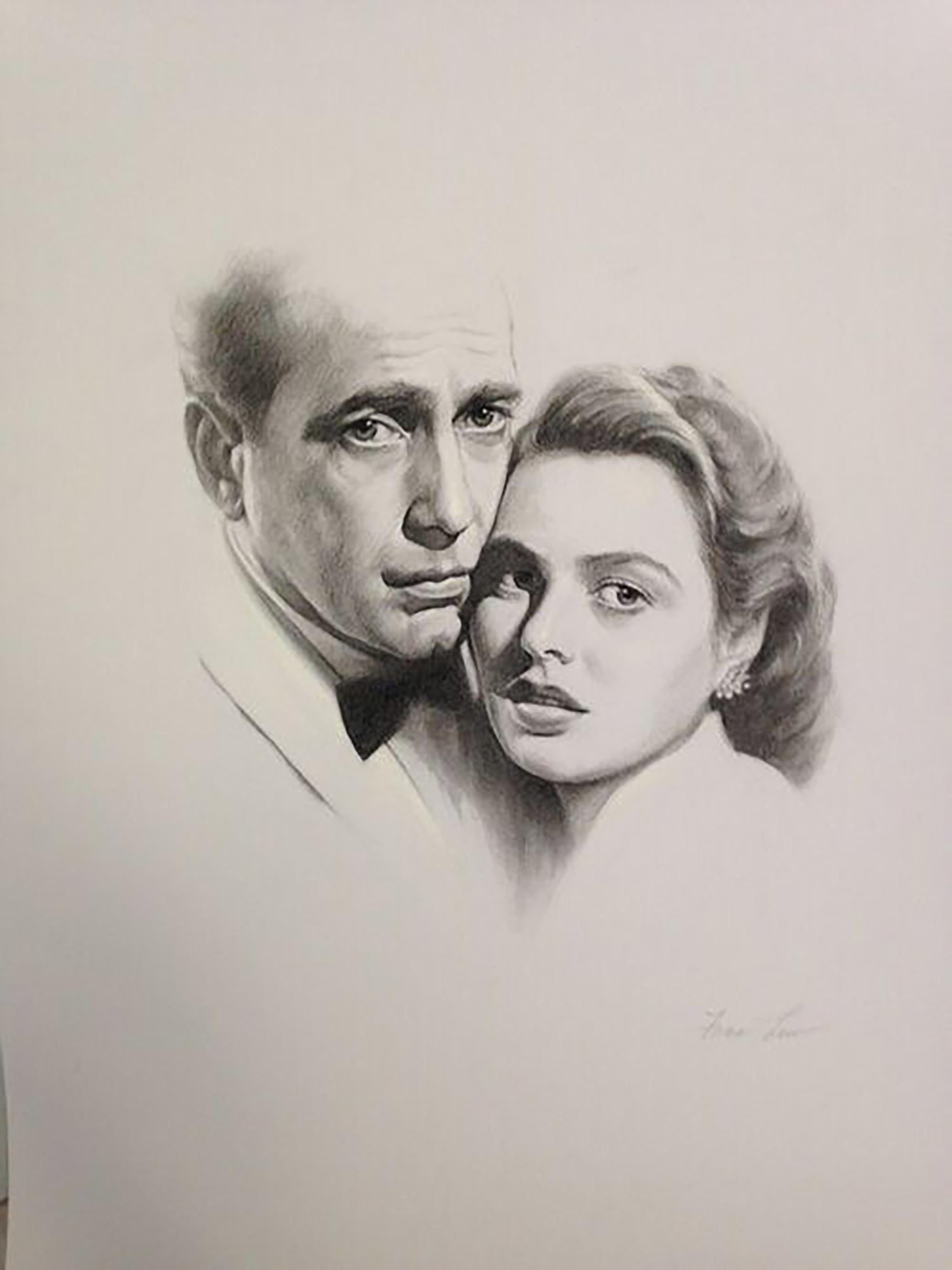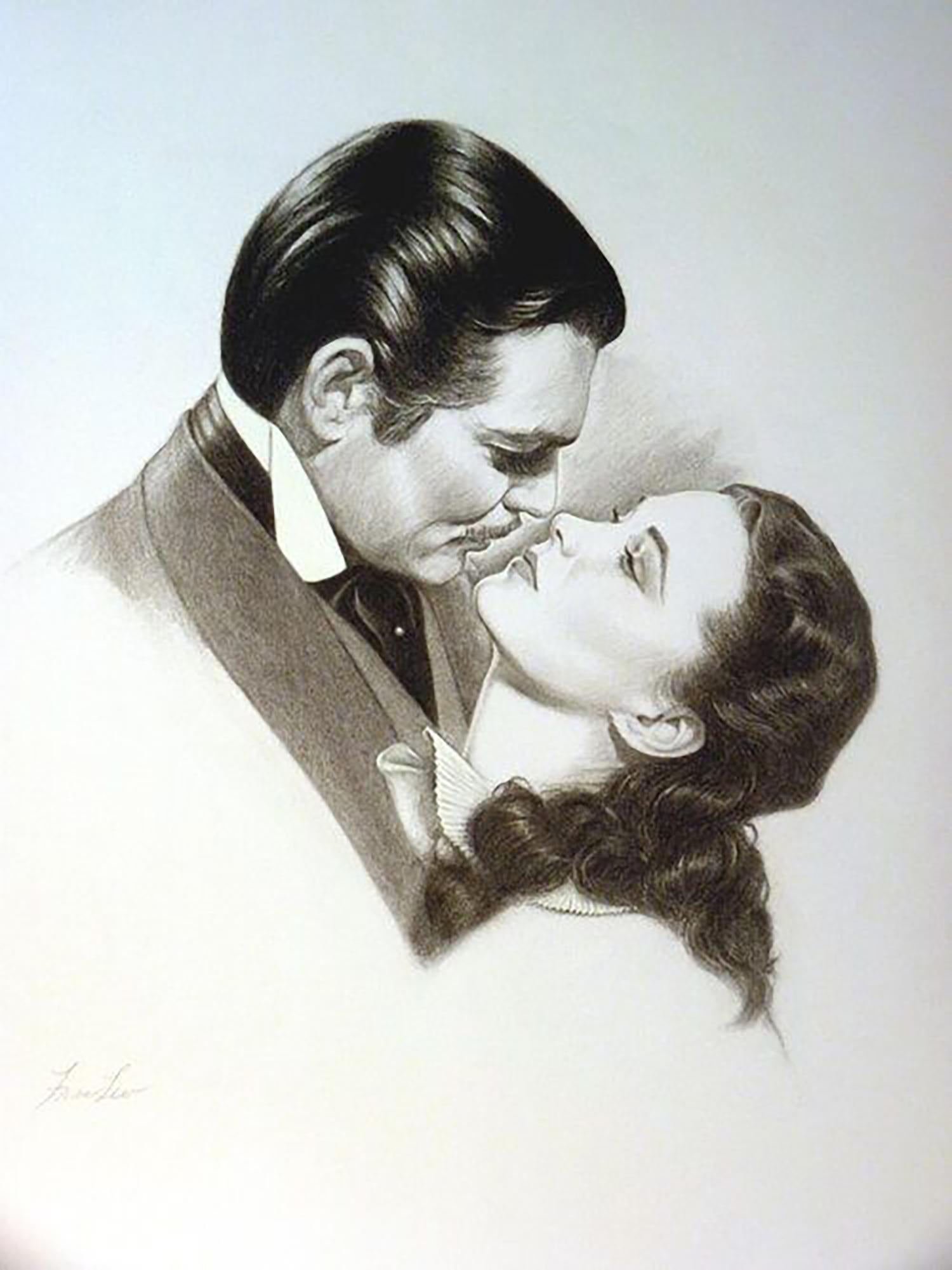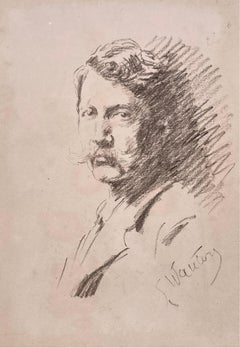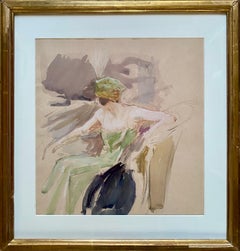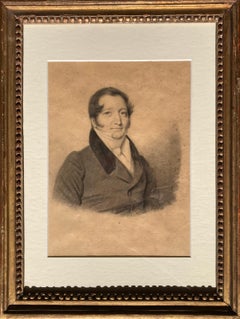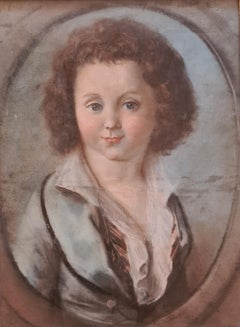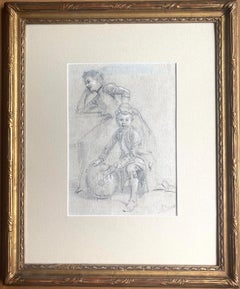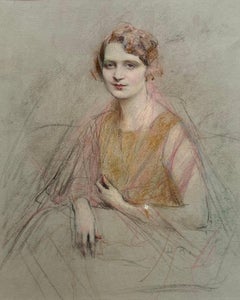
Portrait Of Woman
View Similar Items
Want more images or videos?
Request additional images or videos from the seller
1 of 8
Henri RoyerPortrait Of Woman
About the Item
- Creator:Henri Royer (1869 - 1938, French)
- Dimensions:Height: 14.57 in (37 cm)Width: 12.21 in (31 cm)
- Medium:
- Movement & Style:
- Period:
- Condition:
- Gallery Location:PARIS, FR
- Reference Number:1stDibs: LU2709214291232
About the Seller
New to 1stDibs
Joined in the past six months.
No Reviews Yet
Vetted Seller
These experienced sellers undergo a comprehensive evaluation by our team of in-house experts.
1stDibs seller since 2024
More From This SellerView All
- AutoportraitLocated in PARIS, FREmile WAUTERS Bruxelles 1846 - Paris 1933 Autoportrait Vers 1880-1890 Fusain sur papier fort Signé en bas à droite 24 x 17 cm feuille 39 x 33 cm cadre Bon état Emile Wauters, né à ...Category
Late 19th Century French School Portrait Drawings and Watercolors
MaterialsCharcoal
- Study Of Seated WomanLocated in PARIS, FRHenri ROYER Nancy 1869 - 1938 Paris Study of Seated Woman Watercolor, gouache and charcoal on beige paper Circa 1900-1910 Unsigned 34 x 31 cm sheet 48 x 45 cm frame Provenance: Esta...Category
Early 20th Century French School Portrait Drawings and Watercolors
MaterialsCharcoal, Watercolor, Gouache
- Jules Boilly (1796-1874) Portrait Of A Man, Black chalkLocated in PARIS, FRJulien Leopold BOILLY Paris 1796-1874 Portrait of a man First third of the 19th century Pierre noire Signed on the right 23,5 x 17 cm 38 x 29 cm framed Small stainsCategory
Early 19th Century French School Portrait Drawings and Watercolors
MaterialsLaid Paper
- French School, 18th Century, Portrait Of A Man Seen From Three Quarters, chalkLocated in PARIS, FRFrench School - 18th century Paris, Louis XV-Transition period Portrait of a man seen from three quarters Mid-18th century Sanguine 40 x 29 cm 59 x 50 cm framed Superb Transition pe...Category
Mid-18th Century French School Portrait Drawings and Watercolors
MaterialsChalk, Laid Paper
- Portrait of CondottièreLocated in PARIS, FRAttributed to Léon COGNIET Paris 1794 -1880 Portrait of Condottière Pen and brown ink 10,5 x 8cm 30 x 25cm framed Period frameCategory
Mid-19th Century French School Portrait Drawings and Watercolors
MaterialsPen, Ink
$1,316 - Bust Of A Woman In Profile, Sanguine On Paper, Signed And DatedLocated in PARIS, FRNicolas-André COURTOIS Paris 1734-1806 Bust of a woman in profile 1791 Sanguine Signed and dated lower left on the original mount 43.5 x 37 cm framed 19 x 25 cmCategory
Late 18th Century French School Portrait Drawings and Watercolors
MaterialsChalk
You May Also LikeView All
- Young elegant woman in a hatBy Edgar ChahineLocated in Genève, GEWork on paper Brown wooden frame with glass pane 92 x 73 x 5 cmCategory
Early 20th Century French School Portrait Drawings and Watercolors
MaterialsPastel, Chalk
- French 18th Century Pastel PortraitLocated in Cotignac, FRLate 18th Century French pastel portrait on paper of a young lady in period dress in a 'feigned oval'. In gilt wood frame presented under glass. Very much of its period and similar ...Category
Late 18th Century French School Portrait Drawings and Watercolors
MaterialsPastel, Paper, Crayon
- Woman in thought and Child: the page boy intriguing 19th Century Master drawingBy Gustave Jean JacquetLocated in Norwich, GBA virtuoso charcoal sketch by the Frech 19th Century master Gustave Jean Jacquet (1846-1904). It depicts a thoughtful woman (or woman in thought?) with her face resting on her hand...Category
Late 19th Century French School Figurative Drawings and Watercolors
MaterialsCharcoal, Laid Paper
- Rural couple examining a traveling carnival display – French School, 19th cent.Located in Middletown, NYRed crayon on brown light-wove paper, 6 3/4 x 4 3/4 inches (172 x 121 mm). Light toning and extremely minor, small losses at the very extreme top right and left corners (1/8-inch).Category
Mid-19th Century French School Figurative Drawings and Watercolors
MaterialsCrayon, Handmade Paper
- Lola Carnaval, Charcoal and Pastel on Paper by Enrique GrauLocated in Long Island City, NYLola Carnaval Enrique Grau, Colombian (1920–2004) Date: 1992 Charcoal and Pastel, signed, titled and dated Size: 43.25 x 39.5 in. (109.86 x 100.33 cm) Fra...Category
1990s Portrait Drawings and Watercolors
MaterialsPastel, Charcoal
- Rare Modernist Hungarian Rabbi Pastel Drawing Gouache Painting Judaica Art DecoBy Hugó ScheiberLocated in Surfside, FLRabbi in the synagogue at prayer wearing tallit and tefillin. Hugó Scheiber (born 29 September 1873 in Budapest – died there 7 March 1950) was a Hungarian modernist painter. Hugo Scheiber was brought from Budapest to Vienna at the age of eight where his father worked as a sign painter for the Prater Theater. At fifteen, he returned with his family to Budapest and began working during the day to help support them and attending painting classes at the School of Design in the evening, where Henrik Papp was one of his teachers. He completed his studies in 1900. His work was at first in a post-Impressionistic style but from 1910 onward showed his increasing interest in German Expressionism and Futurism. This made it of little interest to the conservative Hungarian art establishment. However, in 1915 he met the great Italian avant-gardist Filippo Tommaso Marinetti and the two painters became close friends. Marinetti invited him to join the Futurist Movement. The uniquely modernist style that he developed was, however, closer to German Expressionism than to Futurism and eventually drifted toward an international art deco manner similar to Erté's. In 1919, he and his friend Béla Kádar held an exhibition at the Hevesy Salon in Vienna. It was a great success and at last caused the Budapest Art Museum to acquire some of Scheiber's drawings. Encouraged, Scheiber came back to live in Vienna in 1920. A turning point in Scheiber's career came a year later, when Herwarth Walden, founder of Germany's leading avant-garde periodical, Der Sturm, and of the Sturm Gallery in Berlin, became interested in Scheiber's work. Scheiber moved to Berlin in 1922, and his paintings soon appeared regularly in Walden's magazine and elsewhere. Exhibitions of his work followed in London, Rome, La Paz, and New York. Scheiber's move to Germany coincided with a significant exodus of Hungarian artists to Berlin, including Laszlo Moholy-Nagy and Sandor Bortnyik. There had been a major split in ideology among the Hungarian avant-garde. The Constructivist and leader of the Hungarian avantgarde, Lajos Kassák (painted by Hugó Scheiber in 1930) believed that art should relate to all the needs of contemporary humankind. Thus he refused to compromise the purity of his style to reflect the demands of either the ruling class or socialists and communists. The other camp believed that an artist should be a figurehead for social and political change. The fall out and factions that resulted from this politicisation resulted in most of the Hungarian avant gardists leaving Vienna for Berlin. Hungarian émigrés made up one of the largest minority groups in the German capital and the influx of their painters had a significant effect on Hungarian and international art. Another turning point of Scheiber's career came in 1926, with the New York exhibition of the Société Anonyme, organized by Katherine Dreier. Scheiber and other important avant garde artists from more than twenty-three countries were represented. In 1933, Scheiber was invited by Marinetti to participate in the great meeting of the Futurists held in Rome in late April 1933, Mostra Nazionale d’Arte Futurista where he was received with great enthusiasm. Gradually, the Hungarian artists began to return home, particularly with the rise of Nazism in Germany. Kádar went back from Berlin in about 1932 and Scheiber followed in 1934. He was then at the peak of his powers and had a special flair in depicting café and cabaret life in vivid colors, sturdily abstracted forms and spontaneous brush strokes. Scheiber depicted cosmopolitan modern life using stylized shapes and expressive colors. His preferred subjects were cabaret and street scenes, jazz musicians, flappers, and a series of self-portraits (usually with a cigar). his principal media being gouache and oil. He was a member of the prestigious New Society of Artists (KUT—Képzőművészek Új Társasága)and seems to have weathered Hungary's post–World War II transition to state-communism without difficulty. He continued to be well regarded, eventually even receiving the posthumous honor of having one of his images used for a Russian Soviet postage stamp (see image above). Hugó Scheiber died in Budapest in 1950. Paintings by Hugó Scheiber form part of permanent museum collections in Budapest (Hungarian National Museum), Pecs (Jannus Pannonius Museum), Vienna, New York, Bern and elsewhere. His work has also been shown in many important exhibitions, including: "The Nell Walden Collection," Kunsthaus Zürich (1945) "Collection of the Société Anonyme," Yale University Art Gallery, New Haven, Connecticut (1950) "Hugó Scheiber: A Commemorative Exhibition," Hungarian National Museum, Budapest (1964) "Ungarische Avantgarde," Galleria del Levante, Munich (1971) "Paris-Berlin 1900-1930," Centre Georges Pompidou, Paris (1978) "L’Art en Hongrie, 1905-1920," Musée d’Art et l’Industrie, Saint-Etienne (1980) "Ungarische Avantgarde in der Weimarer Republik," Marburg (1986) "Modernizmus," Eresz & Maklary Gallery, Budapest (2006) "Hugó Scheiber & Béla Kádár," Galerie le Minotaure, Paris and Tel Aviv (2007) Hugó Scheiber's paintings continue to be regularly sold at Sotheby's, Christie's, Gillen's Arts (London), Papillon Gallery (Los Angeles) and other auction houses. He was included in the exhibition The Art Of Modern Hungary 1931 and other exhibitions along with Vilmos Novak Aba, Count Julius Batthyany, Pal Bor, Bela Buky, Denes Csanky, Istvan Csok, Bela Czobel, Peter Di Gabor, Bela Ivanyi Grunwald, Baron Ferenc Hatvany, Lipot Herman, Odon Marffy, C. Pal Molnar...Category
Early 20th Century Modern Figurative Paintings
MaterialsPaper, Charcoal, Pastel, Watercolor, Gouache
Recently Viewed
View AllMore Ways To Browse
Portrait Of Woman
Portraits Of A Women
Antique Woman
Woman Of Paris
A Woman Of Paris
Genre Painter
Portrait Woman On Paper
Black Woman Portrait
Portrait Of Black Woman
Portrait Of A Black Woman
Modern Portraits Of Women
Modern Portrait Of A Woman
French Woman Portrait
Antique Woman Portrait
Portrait Of French Women
Antique Portrait Of Woman
European Women Portrait
Woman Charcoal

